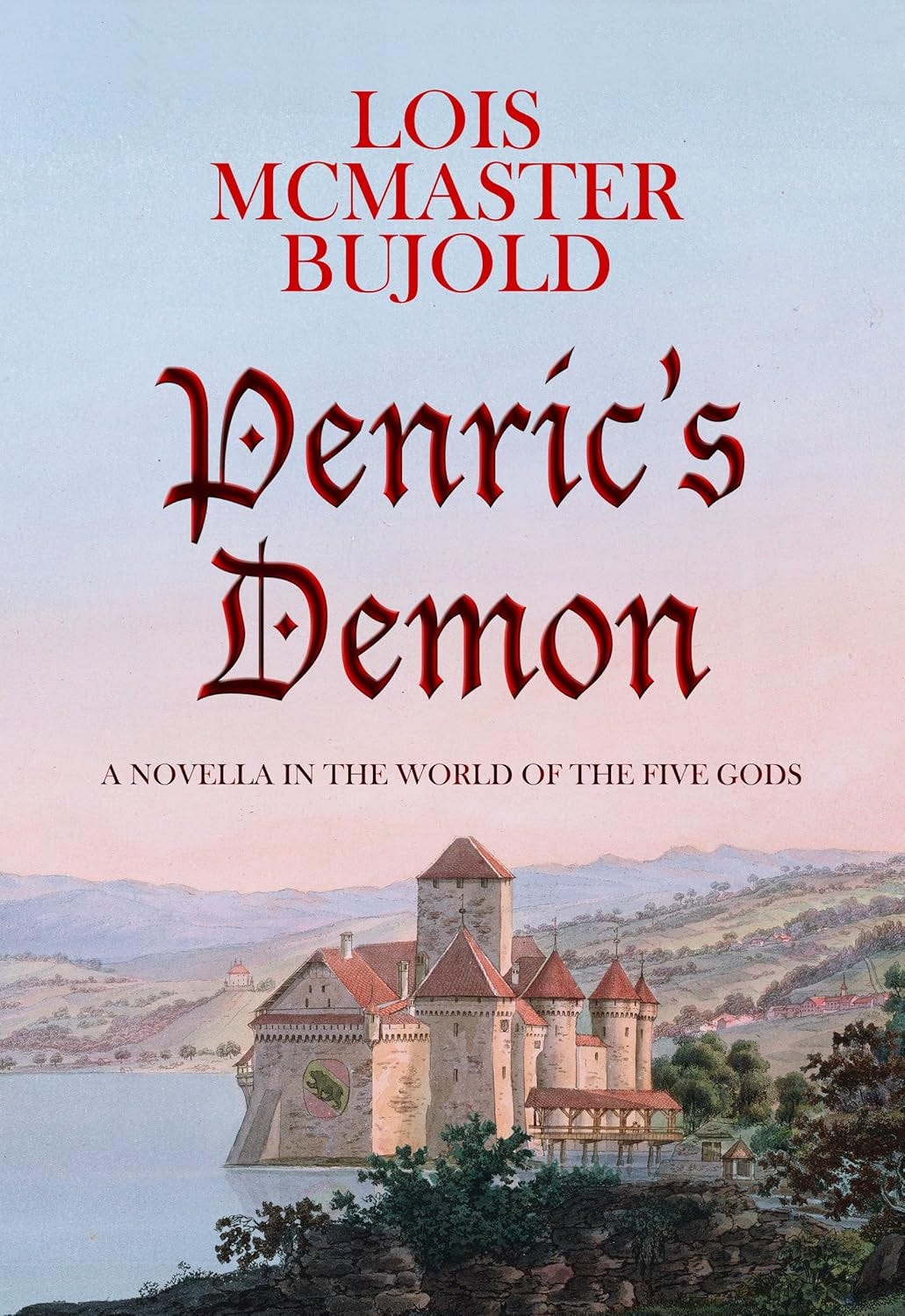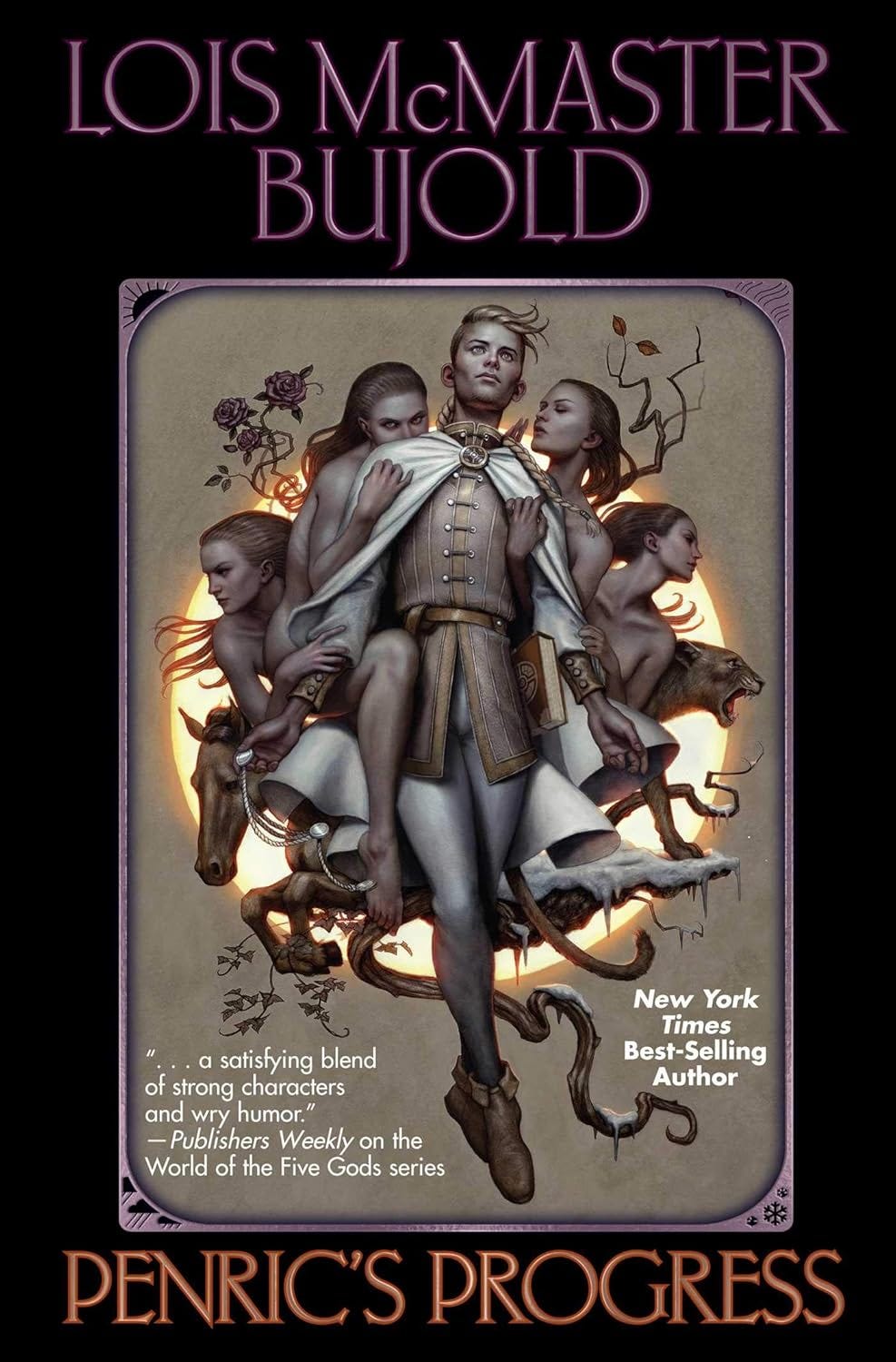EXCLUSIVE: Lois McMaster Bujold Talks New Novella And Unveils New Forthcoming Vorkosigan Paperback Edition
Lois McMaster Bujold is one of the greatest science fiction and fantasy writers to have graced this earth. She’s pushed the limits in both genres with her Vorkosigan Saga and Chalion series. Both have rich worlds and incredible conceptual appeal, but the larger part of what sets her work above the rest of the field is her ability to make readers connect with her characters and elegant prose to a level few can match.
In recent years, she’s nearly exclusively worked on shorter, novella-length works, with two characters, Penric and Desmondea, at the center of her fantasy world. While done as e-books first and then small print-run exclusives from Subterranean Press, these novellas then get collected into print editions by Baen Books. Recently, she’s announced she has a new novella in the Penric series ready for publication, which, until this interview, hasn’t had a public title, at least according to her GoodReads, where she posts most updates for readers.
Not only do we get to learn a new novella title in the Penric series, but this interview also announces something coming from the Vorkosigan universe to paperback for the first time, which her readers will be happy to learn. Let’s get into the talk with a science fiction legend!
JDA: You’ve worked in different genres within the genre over the years, telling romantic comedies, more tech-based science fiction, detective stories, and more. When you set out to write a new book or story, is that intentional as an artist to work on something you haven’t done before to keep it fresh?
LMB: Semi-intentional. If some idea seems stale or tired to me, or is too much like anything I’ve written before, I can’t summon the energy to write it in the first place. Not to mention the ongoing fannish demand of “Each one different from all the others!” (Simultaneously with the caveat “…but not too different.” Though at least that’s easier than “And also each one better than all the others.”)
This was easy when I had, like, three titles; much harder when I have maybe forty. Though I was fortunate that I twigged, very early in my career, that there are actually no genre police, and I can color outside any lines I please.
Whether the result will please anyone else, well, it takes a while for a writer to realize that they can’t control that anyway. Response to this fact will vary by the writer, or possibly by the stage of their career.
Editors’ anxious worries about sales I am happily retired from now.
JDA: In recent years, your work has been in the shorter form of novellas. This is fairly unusual for the industry, but what about writing shorter stories is more appealing to you as a writer at this point in your career?
LMB: In the before-times, pre-ebook, there was very little room in the market for the novella length. Magazines only had space for a few, with restricted editorial needs, and novellas weren’t long enough to publish as stand-alone books, although Ace and I believe later Tor did “doubles”, publishing two back-to-back (and upside down with respect to each other) to make a salable paperback. (Leading, rumor has it, to one writer who’d written both halves under different names once getting royalty reports for the same volume with two different sales figures for his stories.)
I discovered I liked the length when I wrote my first novella, “The Borders of Infinity” (1987), for an invitational anthology, and later added two more to make up my own book-length-publishable novella collection. It was like writing a novel on speed, or zipping down a highway with no exit ramps (to subplots, I suppose.) A novella seems to have about as many scenes as a novel has chapters, or at least mine do. The two easiest parts of any story for me are the beginning, where everything is fresh and drawing me forward with curiosity to see what is going to happen, and the end, where everything is decided. The flailing parts in between I’ve dubbed “the miserable middle.” Novella middles can be just as miserable, but are a lot shorter. But novels still paid better at that time, so I couldn’t really afford to do much short work.
Enter the Kindle revolution around 2010. Suddenly, writers could publish their own stories, at any length, without regard to anyone else’s editorial needs or restrictions. I first dipped my toe into this back then with some novella reprints, because I had their rights and thus could experiment with them. So when I decided to semi-formally semi-retire at age 65, I figured to try out an indie novella for my first venture into original self-e-publishing. Which was “Penric’s Demon”, a subseries now, ten years later, up to 14 titles.
I’ve long been interested in series structures of various sorts. The Vorkosigan saga grew consciously in the mode of the Hornblower books, many stand-alone stories set in the arc of one character’s life, making them accumulate as a sort of biography. The Sharing Knife tetralogy was consciously in the mode of The Lord of the Rings, one single world-spanning story cut into succeeding volumes. The World of the Five Gods, aka the first three Chalion books, started out to be a thematic set, one book for each of the five gods, but it never completed. Penric, as he’s developed in his novellas, seems to be more in the mode of the Sherlock Holmes series. Conan Doyle made it to 56 short stories (and 4 novels) with that, so who knows how long Pen and Des could last. Probably not as long as that, but I’m still having fun for now.
JDA: How much work of yours goes unpublished vs. what readers see released?
LMB: Ever since my nascent pro writing career began at the end of 1982, I’ve finished everything I’ve started, and everything I’ve finished has been published, eventually in some cases. I’m a pretty parsimonious writer, by necessity in the beginning since I could carve out so little good writing time from the matrix of my then-life, so everything had to be made to count. The habit, though not the time constraint, has stuck.
So, no trunk stories here. Scribbled preliminary notes that went nowhere, yes, lots of those. Not that anyone else could read my penciled and abridged handwriting slopping about in my 3-ring notebooks.
JDA: There’s been a lot of talk lately on generative AI and how it’s already upending a lot of the science fiction and fantasy markets. What are your thoughts on AI?
Keep reading with a 7-day free trial
Subscribe to Fandom Pulse to keep reading this post and get 7 days of free access to the full post archives.







